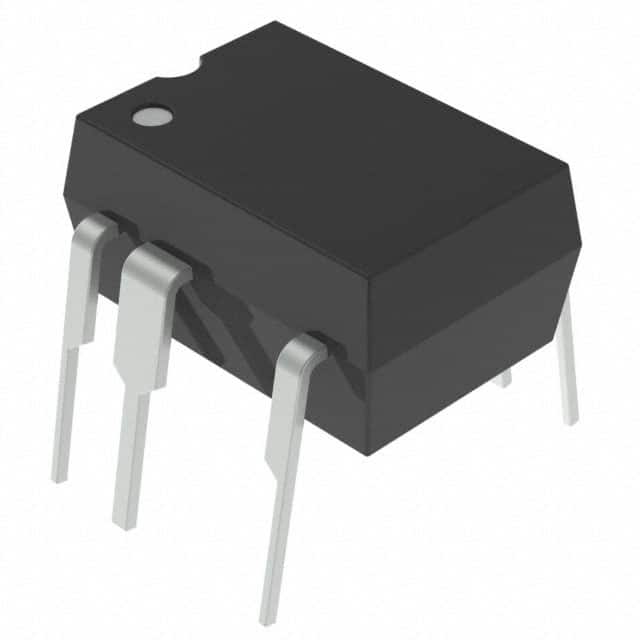Vedi le specifiche per i dettagli del prodotto.

TNY266P
Product Overview
Category
TNY266P belongs to the category of integrated circuits (ICs).
Use
This IC is commonly used in power supply applications.
Characteristics
- TNY266P is a low-power offline switcher IC.
- It operates at high efficiency and provides accurate output voltage regulation.
- The IC incorporates various protection features, ensuring safe operation.
- It is designed for compact and cost-effective power supply solutions.
Package
TNY266P is available in a small outline package (SOP) with a specified pin configuration.
Essence
The essence of TNY266P lies in its ability to efficiently convert input voltage into regulated output voltage, making it suitable for various power supply applications.
Packaging/Quantity
TNY266P is typically packaged in reels or tubes, with each reel/tube containing a specific quantity of ICs. The exact packaging and quantity may vary depending on the manufacturer.
Specifications
- Input Voltage Range: 85V AC to 265V AC
- Output Power: Up to 10W
- Output Voltage: Configurable (based on external components)
- Switching Frequency: 132 kHz (typical)
- Operating Temperature Range: -40°C to +150°C
- Standby Power Consumption: <50 mW
Detailed Pin Configuration
TNY266P has a total of 8 pins, each serving a specific function. The detailed pin configuration is as follows:
- Pin 1: Drain
- Pin 2: Source
- Pin 3: Feedback
- Pin 4: Ground
- Pin 5: VCC
- Pin 6: Sense
- Pin 7: Control
- Pin 8: Sync
Functional Features
- Integrated high-voltage power MOSFET enables direct connection to the AC line.
- Auto-restart feature provides protection against output faults and abnormal operating conditions.
- Frequency jittering reduces EMI emissions, ensuring compliance with electromagnetic compatibility (EMC) standards.
- Built-in current limit and thermal shutdown protection enhance safety and reliability.
Advantages and Disadvantages
Advantages
- High efficiency and accurate voltage regulation result in energy savings.
- Compact size and low component count make it suitable for space-constrained applications.
- Integrated protection features ensure safe operation and protect against faults.
- Cost-effective solution for power supply designs.
Disadvantages
- Limited output power capability compared to higher-rated ICs.
- May require additional external components for specific application requirements.
Working Principles
TNY266P operates on the principle of a flyback converter. It uses a high-voltage power MOSFET to switch the input voltage across a transformer primary winding. The energy stored in the transformer is then transferred to the secondary side, where it is rectified and filtered to provide the desired output voltage.
The IC incorporates various control mechanisms to regulate the switching frequency, maintain output voltage stability, and provide protection against fault conditions.
Detailed Application Field Plans
TNY266P finds extensive use in various power supply applications, including but not limited to: - Consumer electronics - LED lighting - Home appliances - Industrial equipment - Telecommunications
Its compact size, high efficiency, and integrated protection features make it suitable for both low-power and medium-power applications.
Detailed and Complete Alternative Models
There are several alternative models available in the market that offer similar functionality to TNY266P. Some notable alternatives include: - TNY267P - TNY268P - TNY269P
These alternative models may have different specifications, pin configurations, or additional features, providing flexibility for different design requirements.
In conclusion, TNY266P is a low-power offline switcher IC used in power supply applications. It offers high efficiency, accurate voltage regulation, and integrated protection features. Its compact size and cost-effectiveness make it a popular choice for various consumer and industrial applications.
Word count: 536
10 domande e risposte comuni relative all'applicazione di TNY266P nelle soluzioni tecniche
Sure! Here are 10 common questions and answers related to the application of TNY266P in technical solutions:
Q: What is TNY266P? A: TNY266P is a highly integrated offline switcher IC (integrated circuit) designed for low-power applications.
Q: What are the key features of TNY266P? A: The key features of TNY266P include high efficiency, low standby power consumption, built-in safety features, and compact size.
Q: What are the typical applications of TNY266P? A: TNY266P is commonly used in various low-power applications such as power adapters, chargers, LED lighting, and home appliances.
Q: How does TNY266P achieve high efficiency? A: TNY266P incorporates advanced control techniques like frequency jittering and burst mode operation to maximize energy efficiency.
Q: Can TNY266P operate with wide input voltage ranges? A: Yes, TNY266P can operate with a wide input voltage range, typically from 85V AC to 265V AC.
Q: Does TNY266P provide protection against overvoltage and overcurrent? A: Yes, TNY266P includes built-in protection features such as overvoltage protection (OVP), overcurrent protection (OCP), and thermal shutdown.
Q: Is TNY266P suitable for battery-powered applications? A: No, TNY266P is primarily designed for line-powered applications and may not be suitable for battery-powered devices.
Q: Can TNY266P be used in dimmable LED lighting systems? A: Yes, TNY266P can be used in dimmable LED lighting systems by integrating external dimming control circuitry.
Q: What are the advantages of using TNY266P in power adapters? A: TNY266P offers high efficiency, low standby power consumption, and compact size, making it ideal for energy-efficient power adapter designs.
Q: Are there any reference designs available for TNY266P? A: Yes, the manufacturer provides reference designs and application notes to help engineers implement TNY266P in their technical solutions.
Please note that the answers provided here are general and may vary depending on specific design requirements and application scenarios.

